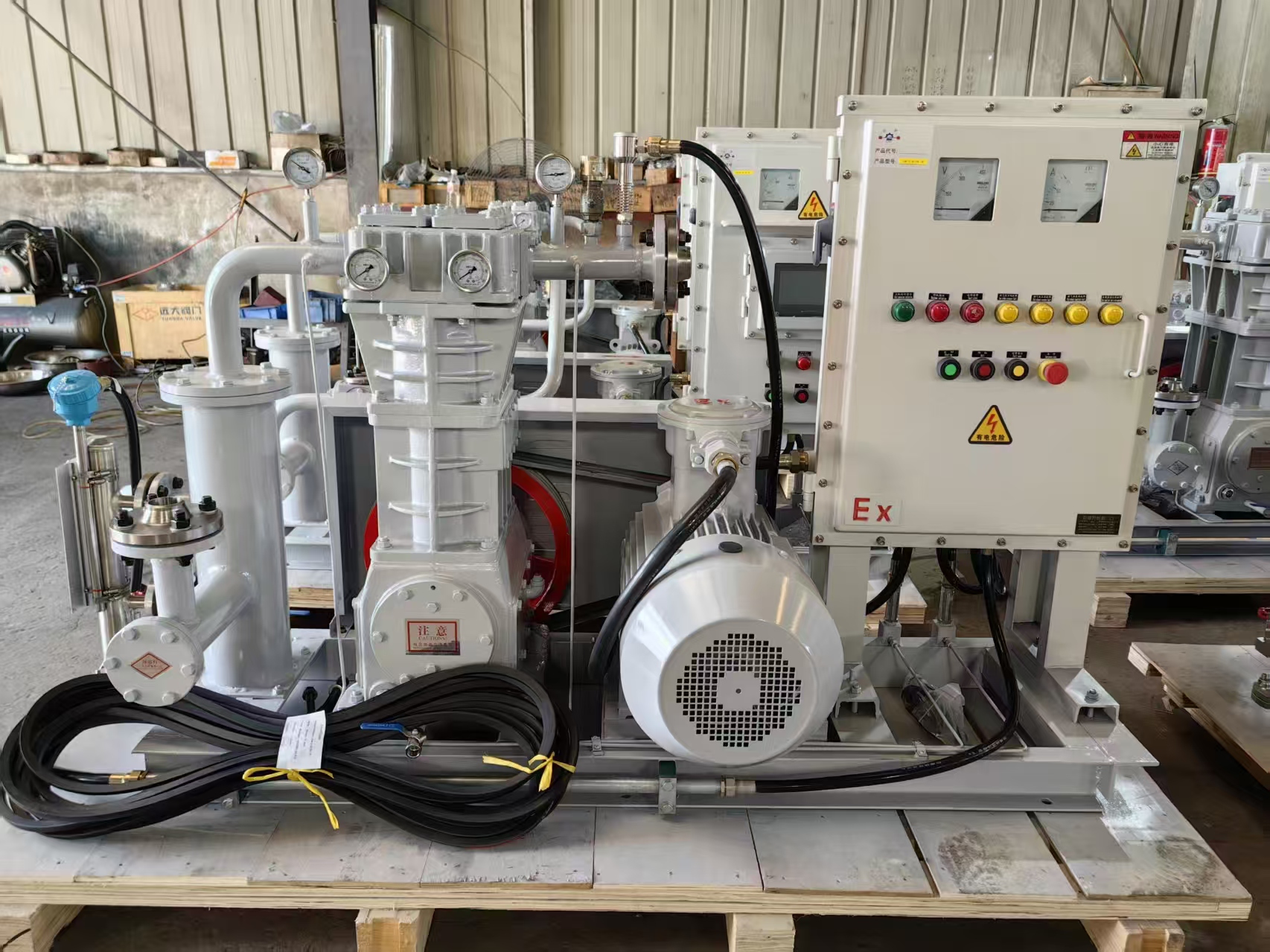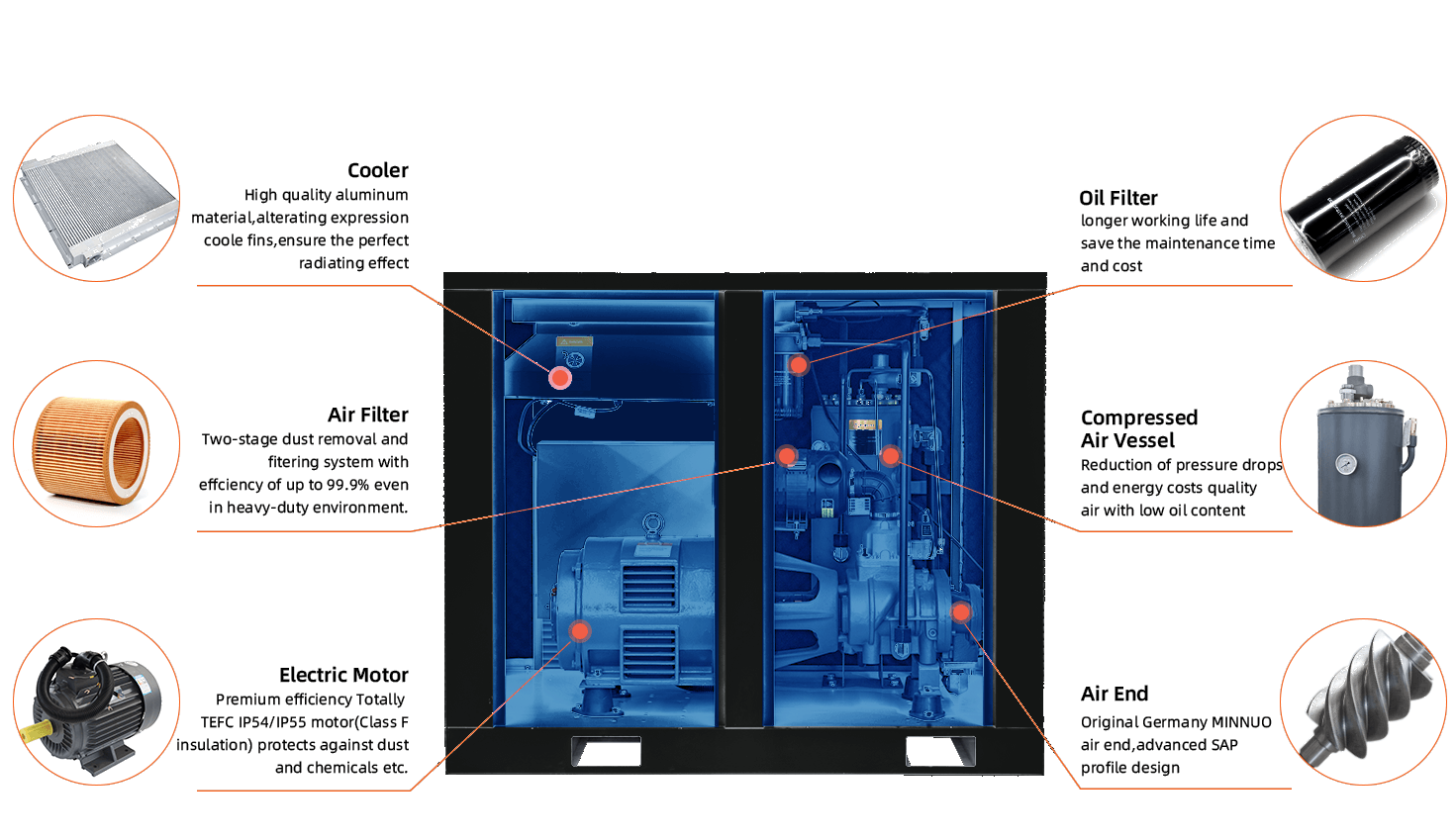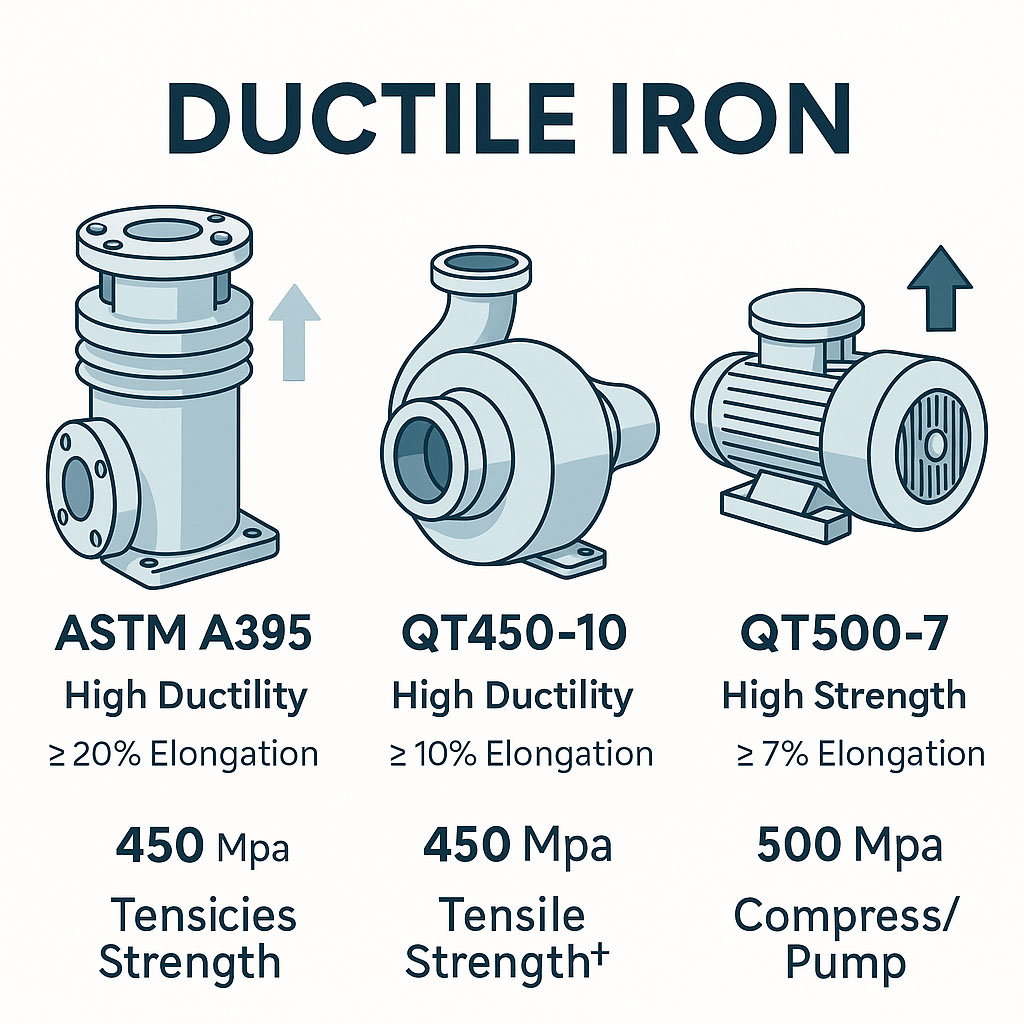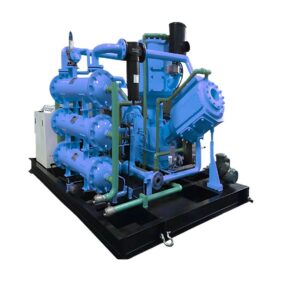1. Oxygen compressors step into the spotlight
Interest in the oxygen compressor surged this year as green-hydrogen projects and resilient medical supply chains grabbed headlines. Global market value hit USD 2.5 billion in 2024 and is tracking a 7.5 % CAGR toward USD 4.5 billion by 2033, while hydrogen-po
wered initiatives—such as the planned around-the-world Climate Impulse flight—showcase oxygen’s partner role in zero-emission fuel systems
2. Working principle in plain English
Inside a modern oil-free oxygen compressor, ambient or PSA-generated O₂ enters a compression chamber. A flexible metal diaphragm (or, in some units, a dry piston or screw element) oscillates, squeezing the gas without exposing it to lubricants. Heat exchangers remove the compression heat; non-return valves maintain flow direction; sensors cut off the drive motor if temperature or pressure exceed set points. Because no oil touches the process gas, purity reaches 99.999 %, making a diaphragm oxygen compressor the go-to solution wherever contamination would cripple catalysts or harm patients.
3. Clean-energy boom: from electrolyzers to aviation
Each megawatt-scale alkaline electrolyzer produces roughly 800 Nm³ h⁻¹ of oxygen that must be pressurised for storage or resale. Compared with piston designs, a multi-stage diaphragm unit delivers 15 % better energy efficiency and seals out moisture that would corrode stacks. Japan’s push for hydrogen highways—0.3 billion USD in diaphragm compressors in 2022, likely doubling by 2033—shows how quickly ultra-pure gas compression capacity is scaling. Moreover, integrated hydrogen refuelling stations now compress on-site O₂ and H₂ in a single skid, slashing logistics cost by 25 %.
4. Post-pandemic hospitals demand oil-free reliability
Global sales of medical oxygen compressors and concentrators will reach USD 1.67 billion in 2025 and could top USD 2.82 billion by 2034 as ageing populations and COPD prevalence climb. Hospitals specify oil-free, low-noise equipment that interfaces with bulk liquid systems and emergency PSA plants. KEEPWIN’s latest 30 bar package in a Southeast Asian cardiac centre cut unplanned downtime 30 % and paid back in under 20 months through reduced cylinder rentals.
5. Heavy-industry ROI: glass, steel and pulp
A high-pressure industrial oxygen compressor feeds blast-furnace enrichment, oxy-fuel glass melting and pulp bleaching. One KEEPWIN retrofit in a European float-glass line boosted combustion efficiency by 18 % and saved 2 GWh of electricity a year. Switching to an oil-free model also removed periodic product rejects caused by hydrocarbon haze—an intangible but critical brand-protection gain.
6. Five advantages buyers highlight
-
Oil-free purity – zero lubricant, zero catalyst poisoning
-
Energy efficiency – diaphragm geometry and VSD drives trim kWh kg⁻¹ O₂
-
Low maintenance – seal sets last ≥ 8 000 h; no oil changes
-
Compact footprint – skid modules fit ISO containers for pop-up hydrogen hubs
-
Smart monitoring – IIoT sensors predict wear and schedule service proactively
7. Key take-away for 2025 procurement teams
Whether you power electrolyzers, fill hospital manifolds or enrich furnaces, selecting the right oxygen compressor now delivers operational uptime and compliance advantages that compound every year. KEEPWIN’s configurable diaphragm oxygen compressor range proves that oil-free doesn’t mean high CapEx—just higher ROI. Contact our engineering desk for a rapid sizing and lifecycle-cost model tailored to your flow, pressure and industry standards.











